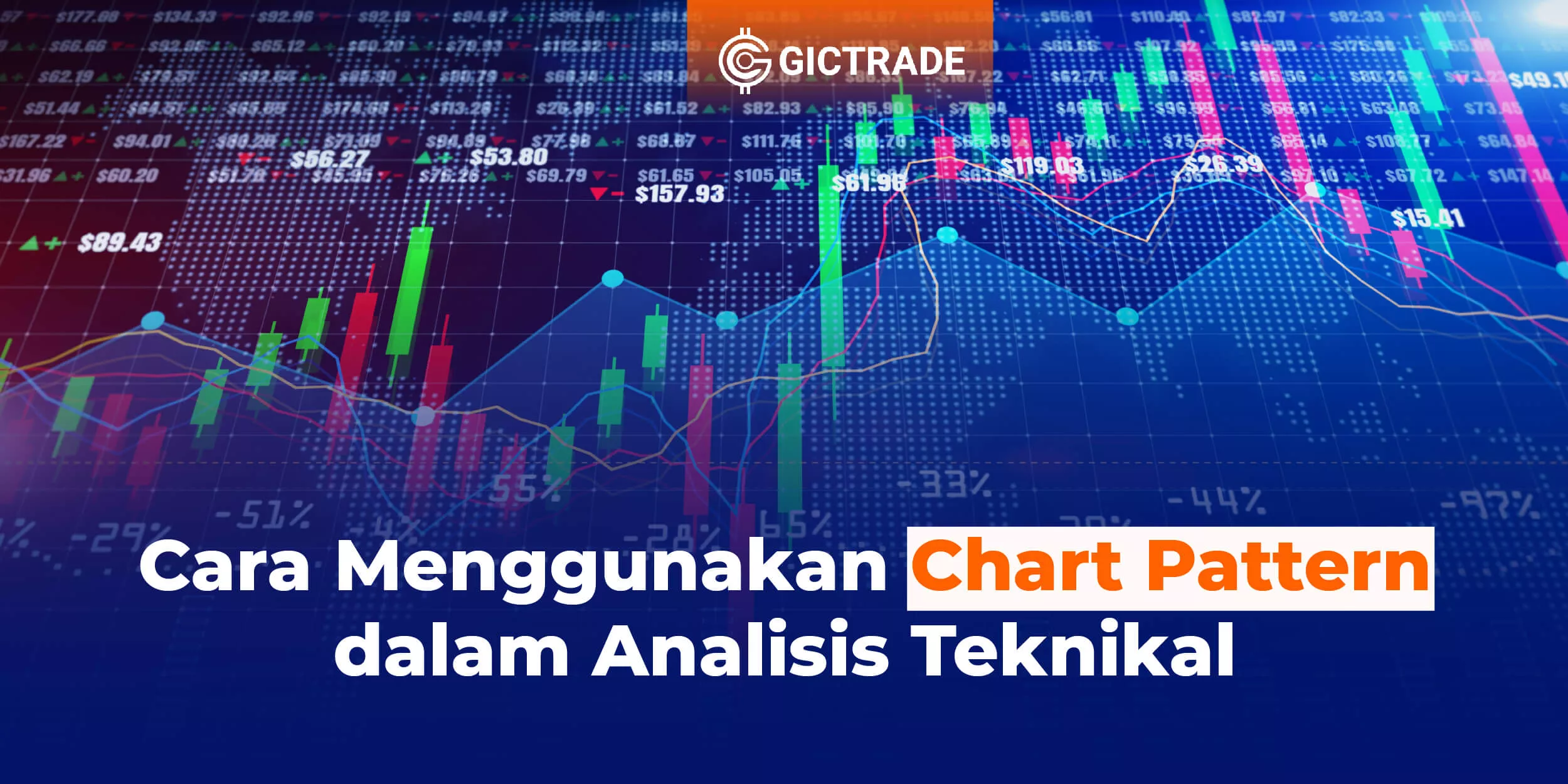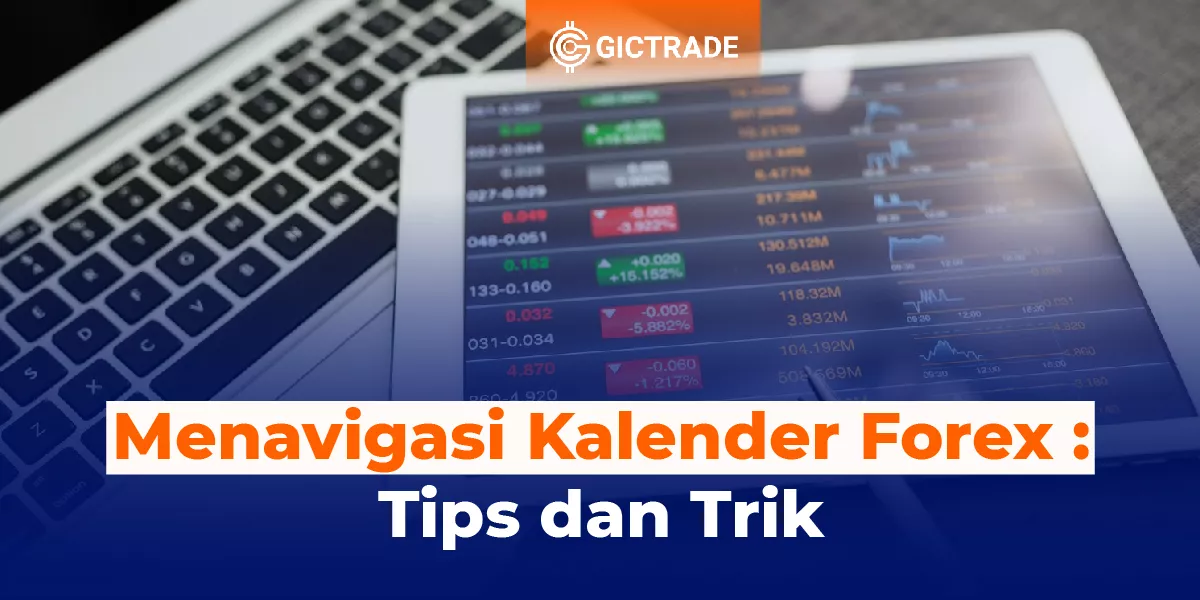How to Use Chart Patterns - Chart patterns are one of the important tools used in technical analysis to help traders identify the direction of price movements and determine potential buy or sell positions.
.webp)
Chart patterns are of different types and can provide powerful trading signals if used correctly. In this article, we will discuss how to use chart patterns in technical analysis to help you improve your trading skills.
Table of Contents
Definition of Chart Pattern
A chart pattern is a pattern on a price chart that appears repeatedly and can indicate the possible direction of future price movements. Chart patterns are usually formed due to the interaction between demand and supply in the market. Chart patterns can be a powerful indicator to know the direction of future price movements.
Types of Chart Patterns
Here are some common types of chart patterns used in technical analysis:
1. Head and Shoulders
Head and Shoulders (head and shoulders) is one of the most recognizable chart patterns in technical analysis. This pattern consists of three peaks, with the middle peak (head) higher than its two side peaks (shoulders). This pattern indicates a change in the direction of price movement from bullish to bearish. To identify the Head and Shoulders pattern, first look for the three peaks on the price chart. The middle peak (head) should be higher than its two lateral peaks (shoulders). The neckline can be drawn by connecting the two low points between the two shoulders. A confirmation signal occurs when the price breaks through the neckline, which indicates that the bullish trend has ended and will be followed by a new bearish trend. Traders can take short positions after the confirmation of the signal, with the stop loss level above the neckline and the take profit level below the next support level.
When identifying the Head and Shoulders pattern, be sure to pay attention to the trading volume. The high volume during the formation of this pattern indicates that the selling pressure is increasing, and the confirmation of the signal will be stronger if it is followed by an increase in trading volume. Also, be sure to pay attention to the timing of the formation of this pattern. Head and Shoulders patterns that form over a longer period of time tend to be more accurate and can provide stronger trading signals. In its use, the Head and Shoulders pattern can be used on various financial instruments, such as stocks, forex, and commodities.
2. Double Tops and Bottoms
Double Tops and Bottoms
is a chart pattern that shows the possible change of price trend from bullish to bearish (Double Tops) or from bearish to bullish (Double Bottoms). This pattern consists of two parallel peaks (Double Tops) or two parallel valleys (Double Bottoms) with the same resistance or support level between them. To identify the Double Tops pattern, first look for two parallel peaks on the price chart. Resistance lines can be drawn by connecting the two peak levels. Signal confirmation occurs when the price breaks through the support level located between the two peaks. This indicates that the bullish trend has ended and will be followed by a new bearish trend. Traders can take a short position after the signal is confirmed, with the stop loss level above the resistance level and the take profit level below the next support level.
Meanwhile, to identify the Double Bottoms pattern, look for two parallel valleys on the price chart. The support line can be drawn by connecting the two levels of the valley. Signal confirmation occurs when price breaks through the resistance level located between the two valleys. This indicates that the bearish trend has ended and will be followed by a new bullish trend. Traders can take a long position after the signal is confirmed, with the stop loss level below the support level and the take profit level above the next resistance level. When identifying Double Tops and Bottoms patterns, be sure to pay attention to the trading volume. Increased volume during the formation of this pattern indicates that selling or buying pressure is increasing. Signal confirmation will be stronger if it is followed by an increase in trading volume.
Also, be sure to pay attention to the timing of the formation of this pattern. Double Tops and Bottoms patterns that form over a longer period of time tend to be more accurate and can provide stronger trading signals. The Double Tops and Bottoms pattern can be used on a variety of financial instruments, such as stocks, forex, and commodities.
3. Triangles
Triangles or triangle is a chart pattern that shows price consolidation before price moves in an uncertain direction. This pattern consists of two trend lines that meet at a specific point, creating different angles. There are three types of triangle patterns, namely symmetrical triangle, ascending triangle, and descending triangle. A symmetrical triangle is formed when the upper and lower trend lines meet at the same point, creating a symmetrical triangle angle. This pattern indicates a balance between buyers and sellers, and is usually followed by a significant breakout.
An ascending triangle is formed when the horizontal upper trend line and the lower trend line tend to rise. This pattern indicates strong buying pressure and is likely to be followed by a significant price increase after a breakout. A descending triangle is formed when the horizontal upper trend line and the lower trend line tend to fall. This pattern indicates a strong selling pressure and is likely to be followed by a significant price drop after the breakout. To identify a triangle pattern, look for the upper and lower trend lines that meet at a specific point. Price consolidation within a triangle pattern is usually caused by a lack of market certainty, be it related to economic conditions, politics, or other factors.
A break out of a triangle pattern usually occurs when price breaks through one of the trend lines, followed by an increase in trading volume. As a trader, you can take advantage of triangle patterns to determine the entry and exit points of trades. For example, if the price breaks the upper trend line on the ascending triangle, this could be a buy signal. Conversely, if the price breaks the lower trend line on the descending triangle, this could be a sell signal. However, make sure to always use proper risk management and do a test run on a demo account before starting trading with this pattern. Triangle patterns can be used on a variety of financial instruments, such as stocks, forex, and commodities.
4. Channels
Channels is a chart pattern that shows the direction of price movement in a relatively stable range and is bound by two parallel trend lines. This pattern consists of an upper trend line as resistance and a lower trend line as support. Channels are usually formed due to the existence of a balanced force between buyers and sellers, so the price is stuck in a relatively stable range. If the price breaks through the upper trend line of the channel, this could be a sign of strong buying pressure and will most likely be followed by a significant price increase. Conversely, if the price breaks through the lower trend line of the channel, this could be a sign of strong selling pressure and will most likely be followed by a significant price drop.
One of the advantages of using channels as a technical analysis tool is that it can help traders to identify support and resistance levels clearly. In a well-formed channel, traders can take advantage of support and resistance levels as more precise entry and exit points for trades.
5. Flags and Pennants
Flags
and Pennants are chart patterns that usually appear in an ongoing trend. These two patterns indicate price consolidation before continuing the previous trend. The flag consists of two parallel lines that slope in the direction of the pre-existing trend, with a shape similar to the flag. Meanwhile, pennants are the same pattern, but formed from two symmetrical triangular lines. In both of these patterns, price consolidation occurs due to a decrease in trading volume. However, when the price breaks out of the pattern, it is usually followed by an increase in trading volume and a continuation of the previous trend.
One of the advantages of using flags and pennants as technical analysis tools is that these patterns can provide fairly accurate trading signals and have a favorable risk-reward ratio. However, traders should pay close attention to the timing of the formation of these patterns, as patterns that form in too short a time or for too long can give false signals.
How to Use Chart Patterns in Technical Analysis
To use chart patterns in technical analysis, you can follow these steps:
1. Signal Confirmation
Once you have identified the chart pattern, confirm the signal by waiting for the price movement that corresponds to the pattern formed. Make sure to wait until the price breaks through the neckline or support/resistance line before taking a trading position.
2. Determine Entry and Exit Levels
Once you have confirmed the signal, determine the entry and exit levels that correspond to the pattern formed. Make sure to determine the right stop loss and take profit levels to manage your risk and profit.
3. Use Additional Technical Indicators
In addition to chart patterns, you can also use additional technical indicators such as moving averages or oscillators to help you confirm signals and determine more accurate entry and exit levels.
4. Practice in a demo account
Before you start trading with chart patterns, make sure to practice them first in a demo account to test the effectiveness of your trading strategy.
|
Also Read : Trading Strategies Using Chart Patterns |
Conclusion
Chart patterns are an important tool used in technical analysis to help traders identify the direction of price movements and determine potential buy or sell positions. Different types of chart patterns can provide powerful trading signals if used correctly. However, keep in mind that chart patterns are not always correct and definitive, so always use proper risk management in every trading position.
Want to Get Maximum Profit Fast? Join GICTrade Now!
Unlike other conventional brokerage firms, GIC through the GICTrade platform provides a solution for traders who do not want to be charged with high trading fees. GICTrade is a peer-to-peer trading platform that brings together traders and market makers.
So, what is special about GICTrade? As a platform that brings together traders and market makers, you as a potential customer can certainly choose between the two, namely becoming a trader or a market maker.
GICTrade's role as a transaction venue provider can minimize costs and help maximize profits for traders and market makers as well as create a fair transaction atmosphere and results.
Traders will benefit from the absence of commission fees and low swap fees and spreads due to the presence of market makers as liquidity providers. You can also join the trader community on GICtrade's Telegram to ask fellow traders directly about their trading experience.
FAQ
Are chart patterns always accurate in predicting the direction of price movements?
- Answer: No, chart patterns are not always accurate and definitive. Always use proper risk management in every trading position.
How long does it take to identify chart patterns on a price chart?
- Ans: The time it takes to identify a chart pattern can vary depending on the type of chart pattern and time frame used.
Can chart patterns be used in short-term or long-term trading?
- Answer: Yes, chart patterns can be used in both short-term and long-term trading.
What are some additional technical indicators that can be used in conjunction with chart patterns?
- Answer: Some additional technical indicators that can be used in conjunction with chart patterns include moving averages or oscillators.
How to manage risk in trading with chart patterns?
- Answer: Make sure to always determine the right stop loss and take profit levels to manage your risk and profit.
 Last:
Last: 






